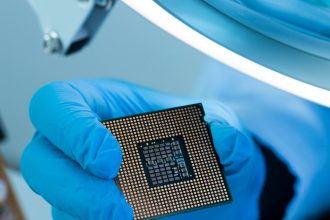Hey there! If you’re fascinated by artificial intelligence and curious about how these smart devices, apps, or gadgets get smarter without constantly needing the internet, you’re in the right spot. We often picture AI as something that needs to be connected to massive servers or cloud services to learn and update. But surprise! That’s not always the case. Thanks to a fascinating field called offline machine learning, AI systems can actually train, adapt, and improve right on the device they’re running on. Think of smartphones, drones, smart cameras, or even IoT gadgets that can learn new things without relying on the cloud. This approach is especially crucial when internet access is spotty, expensive, or when privacy is a top concern.
In this article, we’ll explore what offline machine learning is, how it works, and why it’s such a game-changer. You’ll learn about the tech behind it—like lightweight models and local training algorithms—as well as some real-world examples showing offline AI in action. Whether you’re a tech enthusiast, a developer, or just curious about how your smart devices get smarter without always reaching for Wi-Fi, stick around. This little dive into the world of edge AI and offline learning might just change how you see the future of smart tech!
The Tech Behind Offline AI: Tools, Techniques, and the Future of Edge Machine Learning
So, how does offline AI actually do its thing without relying on the internet? It’s a mix of smart engineering, clever algorithms, and optimized hardware that lets these devices learn locally, without waiting for cloud updates or big data centers.
Model Compression: The Heart of Lightweight AI
First up, one of the essential tricks is model compression. You see, traditional AI models—like the ones powering voice assistants or image recognition—are huge and require lots of computational power. That’s fine when you’re running them on a powerful server, but a problem for tiny devices with limited processing abilities.
Model compression is about shrinking these big models into smaller, faster versions. Techniques like pruning, quantization, and knowledge distillation help.
- Pruning removes unnecessary parts of a neural network, like trimming a tree so it’s more manageable.
- Quantization reduces the precision of the numbers that the model uses, making calculations faster and more energy-efficient.
- Knowledge distillation trains a smaller ‘student’ model to mimic the ‘teacher’ model’s outputs, so it can do its job with less data and compute.
Think of these methods as giving AI a turbocharger—allowing it to run smoothly on devices that don’t have the power of a supercomputer.
On-Device Learning and Federated Learning
Next, when it comes to actually learning on the device, things are a bit more complex. Traditional machine learning happens in data centers, where you have the time, power, and storage needed to train models with large datasets. For offline devices, training happens right on the device itself—called on-device learning.
Imagine your fitness tracker adapting to your habits over time or a security camera learning to recognize new objects—all happening locally. This approach preserves privacy because your sensitive data never leaves your device.
Another emerging technique is federated learning, which essentially allows a bunch of devices to learn collaboratively. Instead of sharing raw data, devices just send updates to a shared model, which is then combined to improve the overall system. This method ensures user privacy and reduces bandwidth needs, making offline or semi-offline learning more practical.
Enter TinyML: Small but Mighty
A key player in the offline learning scene is TinyML, which focuses explicitly on deploying machine learning models on resource-constrained devices with very limited power and memory. Think microcontrollers in smart home gadgets or wearable health devices—small, battery-powered systems that need to work offline but still provide intelligent features.
TinyML frameworks and best practices help developers build models light enough to fit on tiny chips but still performant enough for real-world applications—like voice recognition in a smart speaker or predictive maintenance in factory sensors.
What’s Next? The Bright Future of Edge AI
The future of offline machine learning looks bright and promising. Researchers continue to develop smarter algorithms and better hardware that enable devices to learn and adapt on their own, even in the most challenging environments. Imagine smart city infrastructure that updates itself based on local conditions or autonomous drones that learn to navigate new terrain—all without a Wi-Fi connection.
This approach aligns well with the growing need for privacy, efficiency, and resilience in the world of IoT and edge computing. As the technology matures, we’ll see more AI-powered devices that are not just smart, but also more autonomous, private, and capable of learning wherever they are—without needing to connect to the internet every step of the way.
Wrapping Up
Offline machine learning on edge devices isn’t just a niche tech; it’s quickly becoming a fundamental part of how we build smarter, more private, and more resilient AI systems. With clever tricks like model compression, federated learning, and TinyML, our devices can get smarter without fussing over cloud servers or constant internet access.
Whether it’s a health app on your wrist learning your routine, a drone that adapts to new environments, or a security camera recognizing new faces locally, offline AI is powering the next wave of smarter devices. And as this field evolves, we’re likely to see an even richer ecosystem of devices that don’t just operate offline but actually learn offline—transforming the way we interact with technology every day.
So next time you see your device getting smarter, think about the tiny, clever algorithms working behind the scenes—all without a Wi-Fi signal. That’s offline machine learning making it possible. Pretty cool, right?







